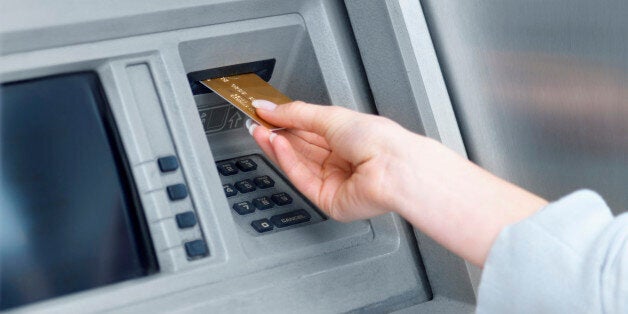
If there is no "magic money tree", as Theresa May told the nation on Question Time, where does money actually come from? The Prime Minister's desire to deliver her prepared line was so overwhelming that her foil had to be a poor nurse. It is clear she calculates that implying we can't just create money will help shore up her vote. Yet it has opened up a national debate which exposes the politicians' Achilles heel - most of them don't know what they are talking about.
On first glance the attack line seems to make tactical sense, no matter how insensitively delivered. Both lived experience and recent opinion polls tell us the over-60s pride themselves in being more sensible than optimistic. After all, as we age, life becomes more about looking after what we have, and less about what new things could emerge tomorrow. Yet the "money tree" attack line may be based on having no clue about how money is actually issued. With Theresa May, Amber Rudd and other Conservative politicians repeating the line with conviction, it suggest they may be less able to help the over 60s look after what they've got.
As I teach this stuff for a living, please allow me to explain. Let's start with a simple question. Ask yourself "where does money come from?"
A typical reaction is to think of how we earn it. But let us consider how it was issued originally, before we earned it. Many people think of how physical notes and coins are created. Yet notes and coins are used to settle only a tiny volume of monetary transactions, now less than 3% in the UK. Most of what we use to settle transactions is not cash but the promises of cash recorded in bank accounts, in other words, credit. And when a bank issues a loan to provide electronic deposits in a client's account, that newly created credit-money is considered as good as money itself. Thanks to electronic payments and widespread cash machines, we experience this credit-money interchangeably from the government-issued notes and coins. Furthermore, banks' promises to pay us cash are accepted in payment of taxes, practically reducing the distinction.
So you thought you had money in your bank account? Not quite. You have a promise of money from the bank which functions even better than a physical representation of that money, like a 10 pound note. The banks do not need an equivalent amount of physical money on deposit in order to issue loans. Instead, the agreement of the borrower to pay back the bank becomes an asset to the bank, and their deposit in the borrower's account is the bank's liability, governed by contract, which includes how much they are prepared to provide in cash each day.
So let's make this really clear for any journalist about to parrot the line "there is no magic money tree". Banks like HSBC and Barclays are creating the vast majority of the money both we and our government use. They create it when they issue loans. And they charge us for it. So, there is an electric money tree. But it is not magic, unless you are a shareholder in a bank.
Many of my students ask: "how is that regulated?"
Badly, if you have politicians who don't understand where money comes from. Though it's not really their fault, as the process is poorly understood by economists. Many have assumed a mistaken view that the amount of reserves of cash that a bank has then restrict the amount of credit they create. According to the Bank of England "rather than banks lending out deposits that are placed with them, the act of lending creates deposits - the reverse of the sequence typically described in textbooks." The amount of money created depends instead on capital adequacy requirements and the ability to settle interbank payments.
Given this monetary system, if banks decide to lend less, then as existing loans are paid back, there is less money to go around, so less work is done within an economy. We call that process a recession. During such contractions in money supply, we witness more foreclosures, bankruptcies and unemployment. A response by many governments, including the past 7 years of Conservative government, has been to cut spending on public services. Yet what that means is a further contraction in the money supply.
Mainstream monetary systems also affect the wider economy in non-recessionary periods. It means that the availability of a national currency in any area is dependent on how connected that area is those people and businesses that receive new money via bank loans. Given the majority of new credit is issued as mortgages for housing, this monetary system means the regional imbalances in an economy become intensified.
The economic dampening effect of this monetary system, and the way it holds back whole regions in the UK, means that tax revenues, private savings and investments are all lower than they could be. It is why this monetary system is contrary to the interests of the over 60s in looking after what they already have. It's one of many reasons why the campaign group Positive Money calls for monetary reform.
A few years ago, I gave a speech in Denmark on this topic. Some hours after my talk the finance minister of Denmark was going to appear. I suggested the audience ask her the simple question "where does money come from?" They did, and she didn't have a good answer. So, the next time you hear a politician say "there is no magic money tree" please grab the microphone and ask them to explain precisely how is money issued, by whom and why we don't issue it for what we want to do in the country. Or you could tell them to sign up to my free course on Money and Society. It's never too late to learn.